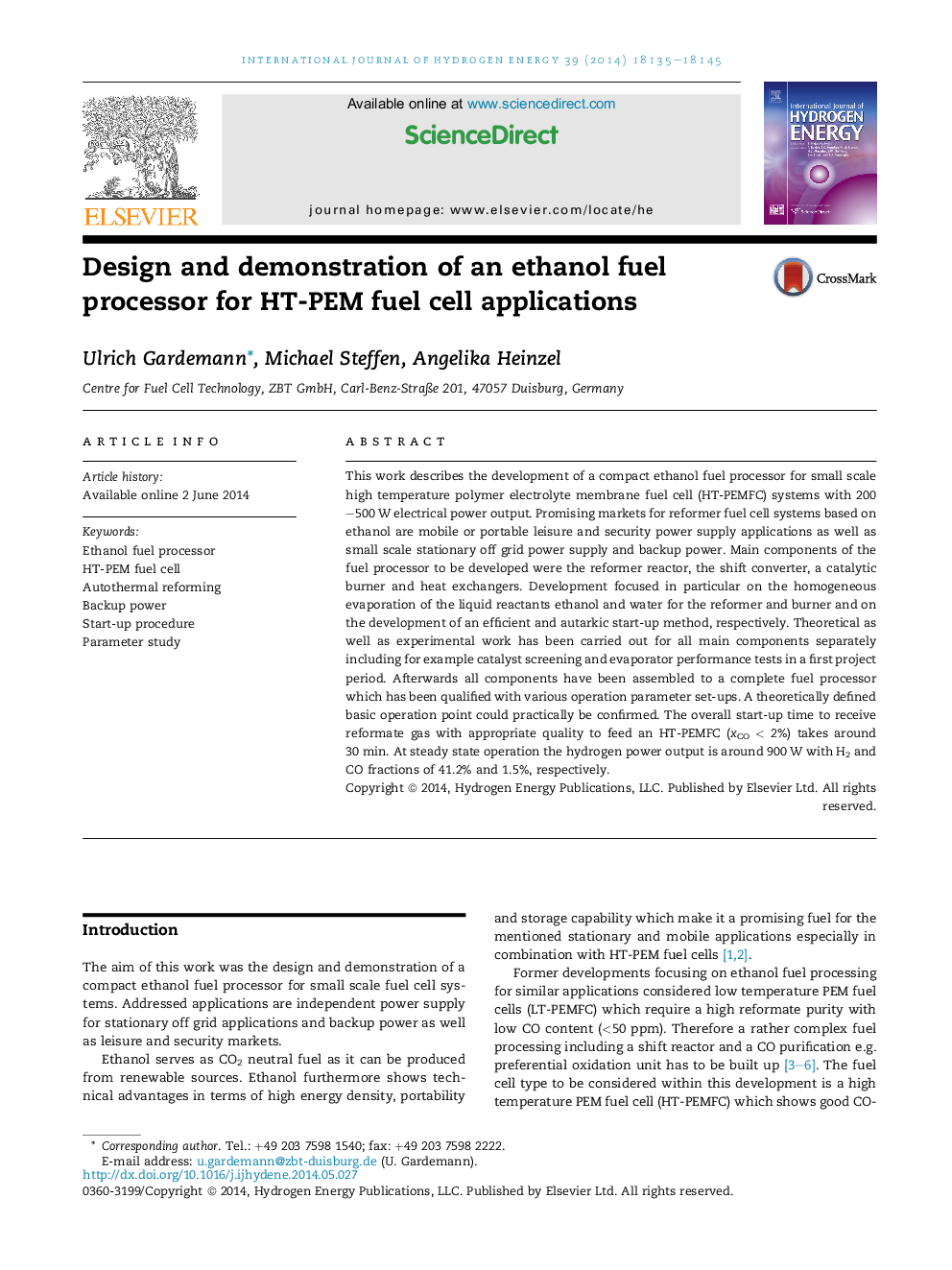| کد مقاله | کد نشریه | سال انتشار | مقاله انگلیسی | نسخه تمام متن |
|---|---|---|---|---|
| 1271911 | 1497478 | 2014 | 11 صفحه PDF | دانلود رایگان |

• Compact fuel processor with commercially available catalysts and components.
• Autarkic start-up with (liquid) ethanol for burner and reformer.
• HT-PEM fuel cell suitable reformate (xCO < 2%) after 30 min from cold starting.
• Burner suitable for ethanol and anodic off gas.
• High degree of freedom for stable operation (e.g. free shift temperature control).
This work describes the development of a compact ethanol fuel processor for small scale high temperature polymer electrolyte membrane fuel cell (HT-PEMFC) systems with 200–500 W electrical power output. Promising markets for reformer fuel cell systems based on ethanol are mobile or portable leisure and security power supply applications as well as small scale stationary off grid power supply and backup power. Main components of the fuel processor to be developed were the reformer reactor, the shift converter, a catalytic burner and heat exchangers. Development focused in particular on the homogeneous evaporation of the liquid reactants ethanol and water for the reformer and burner and on the development of an efficient and autarkic start-up method, respectively. Theoretical as well as experimental work has been carried out for all main components separately including for example catalyst screening and evaporator performance tests in a first project period. Afterwards all components have been assembled to a complete fuel processor which has been qualified with various operation parameter set-ups. A theoretically defined basic operation point could practically be confirmed. The overall start-up time to receive reformate gas with appropriate quality to feed an HT-PEMFC (xCO < 2%) takes around 30 min. At steady state operation the hydrogen power output is around 900 W with H2 and CO fractions of 41.2% and 1.5%, respectively.
Journal: International Journal of Hydrogen Energy - Volume 39, Issue 31, 22 October 2014, Pages 18135–18145